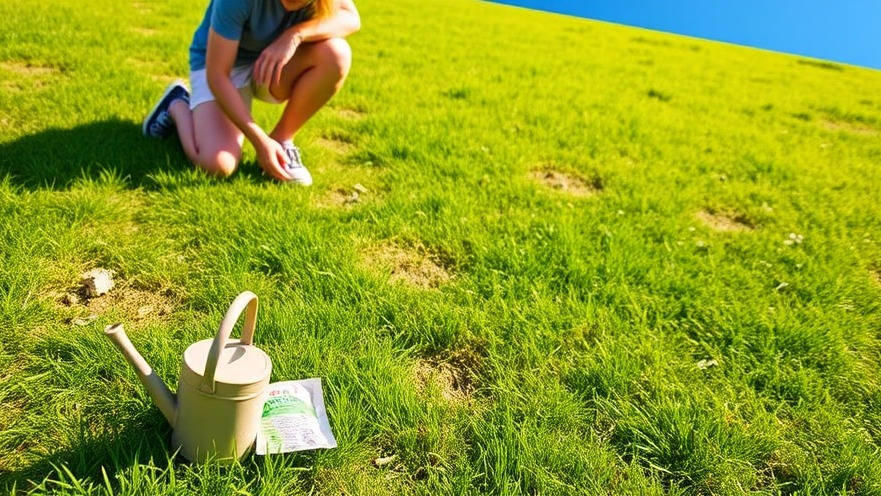
Understanding Lawn Dry Patches: Causes and Solutions
Dry patches on your lawn can be a frustrating challenge for any homeowner, particularly in Maryland’s variable climate. Understanding why these patches form is the first step in crafting an effective remedy. Factors such as inadequate watering, poor soil quality, or even pests can contribute to the appearance of dead and dry patches. Knowing the right treatment approaches can restore your yard to its lush glory.
The Role of Soil Quality in Lawn Health
Healthy soil is the foundation of a vibrant lawn. Maryland’s diverse soil types can vary drastically in terms of nutrient availability and texture. Conducting a soil test can reveal deficiencies in nitrogen, phosphorus, or potassium, which are essential nutrients for grass health. If you find your soil lacking, amending it with organic matter or a balanced fertilizer can significantly improve your lawn’s resilience and ability to retain moisture.
Watering Techniques for a Thriving Lawn
Inadequate watering is often a primary culprit behind dry patches. Maryland summers can be particularly hot and dry, leading homeowners to sometimes neglect their lawn's watering needs. It’s essential to establish a consistent watering schedule, focusing on deep watering methods rather than shallow sprinkling. Watering early in the morning helps ensure that grass absorbs moisture before it evaporates in the daytime heat.
Identifying and Treating Pests
Sometimes, dry patches indicate an infestation of pests like grubs or chinch bugs. These unwanted guests feed on grass roots, leading to yellowing and dead areas. The best way to combat these pests is through integrated pest management strategies. Regularly inspect your lawn for signs of pest activity, such as a sudden increase in bird activity or patches that lift easily when pulled. If you suspect pest damage, consider natural pest control options or consult a local lawn care expert.
Seasonal Lawn Care Tips
Seasonal care is crucial for maintaining a healthy lawn. In Maryland, late spring and early fall represent optimal windows for seeding and fertilizing. Choosing a grass variety suitable for Maryland’s climate can also enhance your lawn's endurance against dry spells. For instance, tall fescue and Kentucky bluegrass are great choices as they adapt well to varying weather conditions.
Embracing a Sustainable Approach to Lawn Care
A pivot to sustainable methods not only benefits the environment but can also improve your lawn's health. Organic mulch can help improve soil moisture retention and nutrients while reducing weeds. Additionally, adopting a more natural fertilization method, such as composting kitchen scraps, can provide essential nutrients back to the soil without the overuse of chemicals.
Community Resources for Lawn Care
In Maryland, local extension services provide invaluable resources for homeowners struggling with lawn issues. These services can connect you with local experts offering soil testing, pest identification, and tailored recommendations to meet the unique conditions in your area. Engaging with community educational programs can empower you to make informed decisions about your lawn care practices.
Actionable Steps for immediate results
Taking proactive measures is vital. Start with a soil test to identify nutrient deficiencies, create a watering schedule that focuses on early mornings, and monitor your lawn frequently for pests. Consider consulting with a lawn care professional for an expert assessment that can save you time and resources in the long run.
 Add Row
Add Row 
 Add Element
Add Element 


Write A Comment